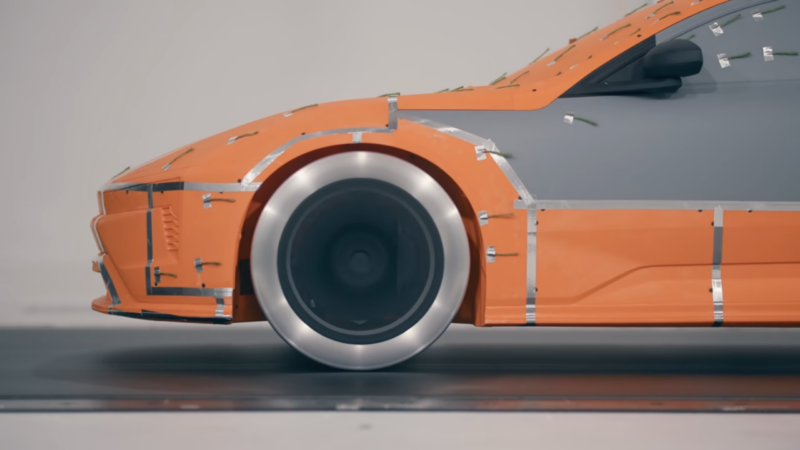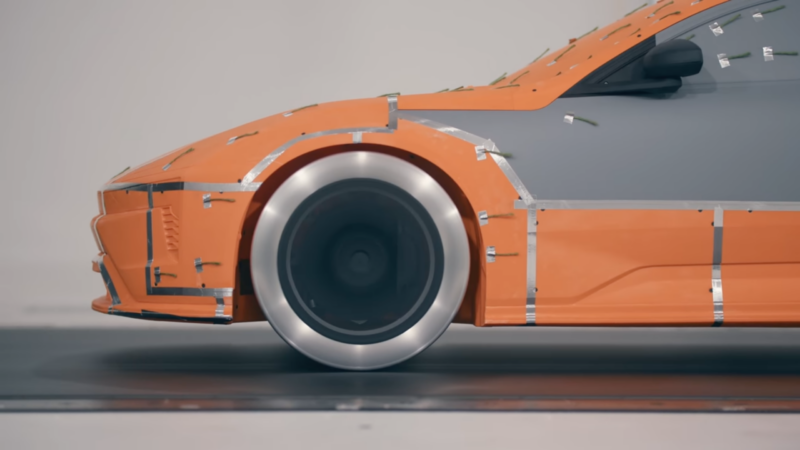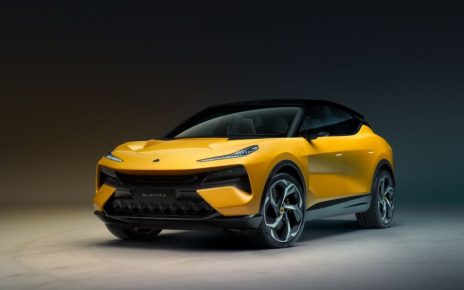
Enlarge / A 3D-printed scale model runs in the wind tunnel. Small tufts of wool stuck to the bodywork help visualize airflow over the body. (credit: Polestar)
Car companies can be quite secretive, and concepts can live and die without the public ever seeing more than a photograph, if that. Polestar is being much less cagey than that when it comes to the Precept, which we should see in production form in another couple of years as the brand’s four-door electric flagship. The company has released a number of short films, each looking at a different aspect of the Precept’s design. The most recent film covered the car’s aerodynamics.
Aerodynamics matter like never before to the car industry. People won’t buy electric cars that don’t offer plenty of range, and a great way to kill range efficiency is to push a draggy shape through the air. The lack of a noisy internal combustion engine powertrain means that absolute noise levels in an EV are many decibels lower, which in turn makes wind or tire noise much more noticeable than in a conventionally powered vehicle.
The biggest problem that designers have are the wheels, each of which churns the air as it rotates. Fairings would be the simplest solution, but no one has been brave enough to go there since the original Honda Insight. Big open grilles matter, too, although these days, active shutters—and the optical effect of black plastic on black plastic—often minimize such penalties.





